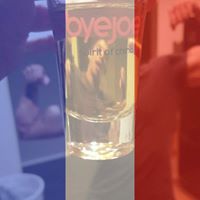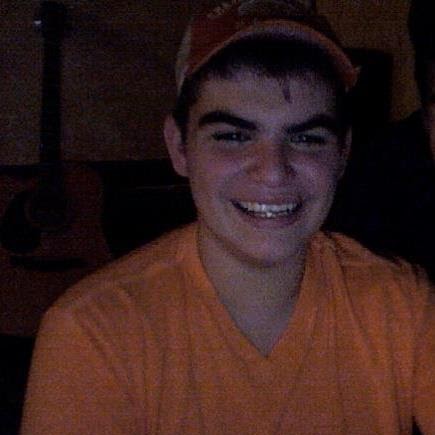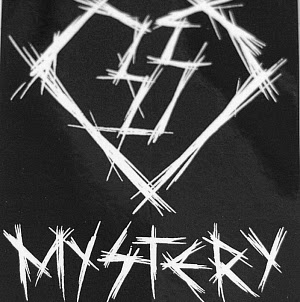Cesar A Garza
age ~49
from Dallas, TX
- Also known as:
-
- Cesar C Garza
- Ceasar Arturo Garza
- Ceaser A Garza
- Cesaer Garza
- Ceazar Garza
- Art Garza
- Julio Cesar Pasillas
Cesar Garza Phones & Addresses
- Dallas, TX
- 14632 Hagar St, San Fernando, CA 91340
- Mission Hills, CA
- Salinas, CA
- Pacoima, CA
- Gonzales, CA
Us Patents
-
Attenuated Rim Phase Shift Mask
view source -
US Patent:6593033, Jul 15, 2003
-
Filed:Sep 21, 1999
-
Appl. No.:09/399840
-
Inventors:Zhiliu Ma - Plano TX
Anthony Yen - Austin TX
Cesar Garza - Plano TX -
Assignee:Texas Instruments Incorporated - Dallas TX
-
International Classification:G03F 900
-
US Classification:430 5
-
Abstract:An embodiment of the instant invention is a mask having a pattern which is transferred to a layer overlying a semiconductor wafer, the mask comprising: a transmissive portion (structure of FIG. 1), the transmissive portion allowing energy which impinges upon the transmission portion to substantially pass through the transmissive portion; a substantially non-transmissive portion (structure of FIG. 1); a semi-transmissive portion (structure of FIG. 1) situated between the transmissive portion and the substantially non-transmissive portion, energy passing through the semi-transmissive portion having a phase; and wherein the phase of energy which passes through the semi-transmissive portion is out of phase with the phase of energy which passes through the transmissive portion. Preferably, the phase of the energy which passes through the semi-transmissive portion is around 180 degrees out of phase with energy which passes through the transmissive portion.
-
Trilayer Microlithographic Process Using A Silicon-Based Resist As The Middle Layer
view source -
US Patent:48913030, Jan 2, 1990
-
Filed:May 26, 1988
-
Appl. No.:7/199087
-
Inventors:Cesar M. Garza - Plano TX
Monte A. Douglas - Coppell TX
Roland Johnson - Sachse TX -
Assignee:Texas Instruments Incorporated - Dallas TX
-
International Classification:G03C 516
-
US Classification:430312
-
Abstract:A method for patterning an integrated circuit workpiece (10) includes forming a first layer (16) of organic material on the workpiece surface to a depth sufficient to allow a substantially planar outer surface (36) thereof. A second, polysilane-based resist layer (22) is spin-deposited on the first layer (16). A third resolution layer (24) is deposited on the second layer (22). The resolution layer (24) is selectively exposed and developed using standard techniques. The pattern in the resolution layer (24) is transferred to the polysilane layer (22) by either using exposure to deep ultraviolet or by a fluorine-base RIE etch. This is followed by an oxygen-based RIE etch to transfer the pattern to the surface (18) of the workpiece (10).
-
Bilayer Photoresist Process
view source -
US Patent:47707399, Sep 13, 1988
-
Filed:Feb 3, 1987
-
Appl. No.:7/010378
-
Inventors:Kevin J. Orvek - Plano TX
Cesar M. Garza - Plano TX -
Assignee:Texas Instruments Incorporated - Dallas TX
-
International Classification:B44C 122
C03C 1500
C03C 2506
C23F 102 -
US Classification:156643
-
Abstract:The present invention relates to a bilayer photoresist process, wherein a first planarizing resist layer is applied to a base and a second or top photoresist layer is applied over the first. The top layer resist is sensitive to deep UV light, while the planarizing layer resist is sensitive to near UV or violet light. The top layer, by use of a dye or other means, is opaque to predetermined near UV or violet wavelengths by which the planarizing layer is illuminated. The top layer is patterned using deep UV light. A flood exposure of the predetermined near UV or violet wavelengths is then used to transfer the pattern of the top layer to the bottom planarizing resist layer. Improved resolution is achieved by the use of deep UV light for patterning the top layer. Less costly yet faster illumination of the planarizing layer is accomplished by using near UV or violet light. Additionally pattern degradation due to spurious reflections normally occurring from near UV exposure of the top layer is avoided.
-
High Pressure Photoresist Silylation Process And Apparatus
view source -
US Patent:50949365, Mar 10, 1992
-
Filed:Jun 26, 1990
-
Appl. No.:7/544085
-
Inventors:George R. Misium - Richardson TX
Cesar M. Garza - Plano TX
Cecil J. Davis - Greenville TX -
Assignee:Texas Instruments Incorporated - Dallas TX
-
International Classification:G03F 736
-
US Classification:430325
-
Abstract:A process for silylation of positive or negative photosensitive resist layer on a semiconductor wafer after the resist layer has been exposed to radiant energy through a mask which includes introducing a silylating agent to the wafer at high pressure over 760 torr and, usually, at temperatures less than 180. degree. C. Increased pressure increases the rate of silylation, allows practical use of lower process temperatures, and, therefore, allows better process control. Also an apparatus is disclosed for applying the high pressure silylation process to a wafer.
-
Uniformity Using Stagnant Silylation
view source -
US Patent:50857290, Feb 4, 1992
-
Filed:Sep 7, 1990
-
Appl. No.:7/579120
-
Inventors:Cesar M. Garza - Plano TX
Ricky A. Jackson - Garland TX
Ryan E. Priebe - Dallas TX -
Assignee:Texas Instruments Incorporated - Dallas TX
-
International Classification:H01L 21306
B44C 122
B05D 306
G03C 500 -
US Classification:156628
-
Abstract:A system and method whereby the uniformity of the silylating agent throughout the reaction chamber and primarily at the surface of the wafer is significantly improved to provide a significant improvement in the line width uniformity. In accordance with a first embodiment of the invention, this is accomplished by stagnant silylation wherein the silylating agent is introduced into the reaction chamber and the reaction chamber is then sealed during the entire time required to carry out the silylation. The advantage of this approach is optimum uniformity since once equilibrium has been reached, there is no net change of flow or pressure of the silylating agent across the wafer. Another advantage is reduction in the total consumption of the silylating and carrier gases. In accordance with a second embodiment of the invention, the silylating agent flows laminarly across the surface of the wafer to provide uniformity of the silylating agent at the wafer surface. This is accomplished by introducing the silylating agent and carrier gas along one side of the wafer and uniformly flowing the gases across the entire wafer due to a pressure differential across the wafer from the location(s) of gas entry into the reaction chamber to the location(s) of gas exit from the reaction chamber, for example.
-
Dry Development Of Photoresist
view source -
US Patent:48820083, Nov 21, 1989
-
Filed:Jul 8, 1988
-
Appl. No.:7/216884
-
Inventors:Cesar M. Garza - Plano TX
Monte A. Douglas - Coppell TX
Lee M. Loewenstein - Plano TX
Cecil J. Davis - Greenville TX -
Assignee:Texas Instruments Incorporated - Dallas TX
-
International Classification:B44C 122
H01L 21306
C03C 1500
B29C 3700 -
US Classification:156643
-
Abstract:A process for developing a photolithographic pattern on the surface of an exposed workpiece in a process chamber; disposing the workpiece in a process chamber; heating the workpiece and introducing a silylating agent to the process chamber and to a face of the workpiece to be processed; generating activated species from a source of oxygen; and introducing the activated species to the face of the workpiece.
-
Dark Rims For Attenuated Phase Shift Mask
view source -
US Patent:57167389, Feb 10, 1998
-
Filed:Jun 7, 1996
-
Appl. No.:8/660294
-
Inventors:Cesar M. Garza - Plano TX
-
Assignee:Texas Instruments Incorporated - Dallas TX
-
International Classification:G03F 900
-
US Classification:430 5
-
Abstract:A mask for use in semiconductor fabrication which includes a light transparent substrate, preferably glass, having a border and light semitransparent material having light transmissivity preferably in the range of from about 6 to about 10 percent disposed thereon within the border. A light opaque layer which is sensitive to light and which can be patterned and have a predetermined portion thereof removed in response to selective exposure to light is disposed along substantially the entire border of the substrate. The mask can further include a region of light semitransparent material disposed around the border and under the light opaque layer. The light opaque layer is preferably a photosensitive polyimide.
License Records
Cesar Garza
Address:
2828 Hood St APT 607, Dallas, TX 75219
License #:
A5126751
Category:
Airmen
Resumes

Cesar Garza Edinburg, TX
view sourceWork:
Sodexo- University of Pan American
Aug 2011 to 2000 Copper Canyon Tapas Lounge
McAllen, TX
Mar 2009 to 2011
Participated in the Iron Chef Romeo's Catering Service
Edinburg, TX
Mar 2007 to Mar 2009
Chef and Owner McLain's Restaurant
McAllen, TX
Apr 2005 to Mar 2007
Executive Chef Outback Steak House
McAllen, TX
Sep 2002 to Apr 2005
Trainer The Tower Club
McAllen, TX
Apr 2001 to Aug 2002
Kitchen supervisor and rounds man Self employed
Jul 2000 to Mar 2001 Pearl Street Restaurant
Dallas, TX
Sep 1998 to Jun 2000
Specials Chef and rounds man performing tasks associated Souper Salad
Dallas, TX
Mar 1997 to Aug 1998
Assistant Manager/Kitchen Manager Sfuzzi
Addison, TX
Feb 1996 to Mar 1996
Supervisor of saut cook Wyndham Anatole Hotel Resort, Nana Grill
Dallas, TX
Jan 1995 to Feb 1996
Pastry Chef
Aug 2011 to 2000 Copper Canyon Tapas Lounge
McAllen, TX
Mar 2009 to 2011
Participated in the Iron Chef Romeo's Catering Service
Edinburg, TX
Mar 2007 to Mar 2009
Chef and Owner McLain's Restaurant
McAllen, TX
Apr 2005 to Mar 2007
Executive Chef Outback Steak House
McAllen, TX
Sep 2002 to Apr 2005
Trainer The Tower Club
McAllen, TX
Apr 2001 to Aug 2002
Kitchen supervisor and rounds man Self employed
Jul 2000 to Mar 2001 Pearl Street Restaurant
Dallas, TX
Sep 1998 to Jun 2000
Specials Chef and rounds man performing tasks associated Souper Salad
Dallas, TX
Mar 1997 to Aug 1998
Assistant Manager/Kitchen Manager Sfuzzi
Addison, TX
Feb 1996 to Mar 1996
Supervisor of saut cook Wyndham Anatole Hotel Resort, Nana Grill
Dallas, TX
Jan 1995 to Feb 1996
Pastry Chef
Education:
El Centro Community College
Dallas, TX
Sep 1994 to Mar 1996
Associate's in Food and Hospitality Brookhaven Community College
Dallas, TX
Jun 1992 to Jul 1993
Associates in Food & Hospitality
Dallas, TX
Sep 1994 to Mar 1996
Associate's in Food and Hospitality Brookhaven Community College
Dallas, TX
Jun 1992 to Jul 1993
Associates in Food & Hospitality
Vehicle Records
-
Cesar Garza
view source -
Address:2828 Hood St APT 607, Dallas, TX 75219
-
VIN:1GNFC13057R384048
-
Make:CHEVROLET
-
Model:TAHOE
-
Year:2007
Medicine Doctors

Cesar Garza, Santa Ana CA - ATC
view sourceSpecialties:
Athletic Training
Address:
2802 S Flower St, Santa Ana, CA 92707
(714)5132974 (Phone), (714)5132979 (Fax)
(714)5132974 (Phone), (714)5132979 (Fax)
Languages:
English

Cesar Garza
view sourceName / Title
Company / Classification
Phones & Addresses
Director, Treasurer
SUZE, INC
4345 W Northwest Hwy STE 270, Dallas, TX 75220
12308 Brookmeadow Ln, Dallas, TX 75218
12308 Brookmeadow Ln, Dallas, TX 75218
Governing, Governing Person, Principal
CHRONI ENTERPRISES, LLC
Business Services · Advertising Services
Business Services · Advertising Services
121 Interpark Blvd STE 501, San Antonio, TX 78216
2828 Hood St #607, Dallas, TX 75219
2828 Hood St #607, Dallas, TX 75219
Owner, Principal
Reu Express
Business Services
Business Services
4810 Firestone Blvd, South Gate, CA 90280
(323)5649171
(323)5649171
President
GARZA REALTY, INC
Real Estate Agent/Manager
Real Estate Agent/Manager
15434 Gale Ave STE G, Hacienda Heights, CA 91745
15434 Gale Ave, Whittier, CA 91745
15434 Gale Ave, Whittier, CA 91745
President
MATJOS INC
1536 W 7 St, Los Angeles, CA 90017
Cesar's Seafood Market and Restaurant LLC
Plaxo

cesar garza
view sourceGarza Garcia, NLService Providers Mexico at Cisco Systems de Mexic... Past: AT&T / Lucent / Avaya

cesar garza
view source
Cesar Garza
view sourceDenton, TX
News

Texas Agencies Duel Over Alamo Commander's Letter
view source- However, the commission voted down a motion to approve the request Tuesday after commission staff recommended against the document loan. The commission will meet again in Austin in three weeks to reconsider the matter, library spokesman Cesar Garza said. In the meantime, the staffs of the two agenci
- Date: Oct 04, 2012
- Source: Google

Texas agencies duel over Alamo commander's letter
view source- However, library staffers are reluctant to loan the original, and the commission denied the loan request on Tuesday. Library spokesman Cesar Garza says the commission will meet again in Austin in three weeks to reconsider the matter.
- Date: Oct 04, 2012
- Category: U.S.
- Source: Google

Cesar Garza De Luna
view source
Cesar Garza
view source
Jannette N Cesar Garza
view source
Julio Cesar Garza
view source
Cesar O Garza Sr.
view source
Cesar Garza
view source
Cesar Ricardo Garza
view source
Cesar Garza
view sourceYoutube
Classmates

Cesar Garza (Same)
view sourceSchools:
United High School Laredo TX 1975-1979
Community:
Mark Lecuona, Ana Martinez

Cesar Garza
view sourceSchools:
Western International High School Detroit MI 1993-1997
Community:
Hylda Hayes, Tom Insprucker

Cesar Garza
view sourceSchools:
Sheffield High School Sheffield PA 2000-2004
Community:
Sandra Harris, Wendy Wagner, Mike Blanks

Cesar Garza
view sourceSchools:
West Campus High School San Antonio TX 1991-1995
Community:
Jennifer Suhler, Liz Rosa, Cathy Hain, Javier Urteaga, Willie Hudson

Cesar Salazar (Garza)
view sourceSchools:
J. W. Nixon High Laredo TX 1997-2001
Community:
Veronica Aleman, Sylvia Planer

Cesar Garza
view sourceSchools:
Holding High School Laredo TX 1947-1950
Community:
Jessica Salinas, Alicia Millsaps, Lynn Milburn, Dalmiro Gauna

Cesar Garza
view sourceSchools:
Saint Anne School Santa Ana CA 1980-1987
Community:
Chuck Endweiss, Bonni Korn, Mikie Bellamy, Christina Sifuentes, Wendy Whitecavage
Myspace
Flickr
Googleplus

Cesar Garza
Work:
CARSSA - SUPERVISOR
Education:
ITIR

Cesar Garza
Education:
Universidad Autónoma de Nuevo León - Contaduria Publica, Universidad Regiomontana - Administracion
About:
Agente de Seguros en la Ciudad de Puebla, Mexico

Cesar Garza
Lived:
Dallas,Tx
Education:
South Oak Cliff High School

Cesar Garza
Education:
Saint Augustine High School

Cesar Garza
Tagline:
"No Solo de Bits Vive el Hombre"

Cesar Garza
Tagline:
IFUCKINGLOVETHESK8!!

Cesar Garza
Tagline:
Arriba los tigres UANL

Cesar Garza
Get Report for Cesar A Garza from Dallas, TX, age ~49













